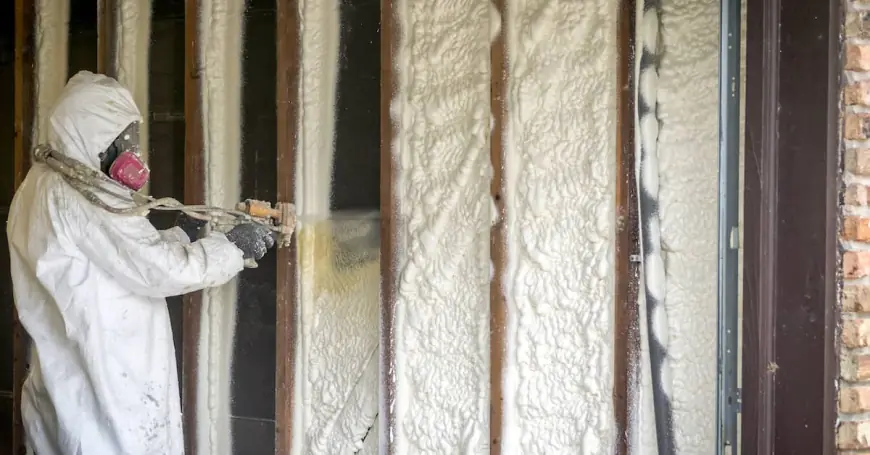Commercial Insulation Services That Meet Building Code Standards

Meeting insulation standards isn’t optional in commercial construction—it’s a regulatory requirement. Whether retrofitting an older structure or designing a new facility, commercial insulation services must align with building code standards to ensure safety, energy performance, and long-term cost savings.
This article breaks down how professional commercial insulation services address code compliance across various building types. It highlights the connection between materials, installation practices, and regulatory benchmarks, helping readers understand what matters most when planning insulation upgrades or installations for commercial buildings.
The Role of Insulation in Commercial Building Codes
Insulation requirements in commercial projects are stricter than residential due to the scale, occupancy types, and energy use expectations. These codes vary by region but are guided by national frameworks like the International Energy Conservation Code (IECC) and ASHRAE Standard 90.1.
What These Standards Require
Building codes address insulation across several building envelope components, focusing on thermal control and fire safety:
-
Prescribed R-values for walls, roofs, and floors
-
Continuous insulation (CI) in many wall assemblies
-
Air and vapor barrier requirements to prevent moisture issues
-
Flame spread and smoke development limitations for interior-facing insulation
-
Specific standards based on climate zones
Commercial insulation services ensure all installed materials and assemblies meet or exceed these thresholds.
Meeting Regional and Project-Specific Code Requirements
Not all buildings follow the same guidelines. Codes are tailored based on region, building function, and whether the project is a renovation or new construction.
Climate Zone Considerations
Insulation requirements differ significantly between hot, mixed, and cold climates. The IECC breaks the U.S. into eight climate zones, each with unique R-value benchmarks.
-
Hot and humid zones prioritize vapor retarders and roof insulation
-
Cold zones demand higher wall and subfloor R-values
-
Mixed zones may need both heating and cooling efficiency
New Construction vs. Retrofit Projects
In retrofit situations, buildings may be exempt from certain codes unless changes trigger a full energy upgrade. Commercial insulation services guide owners through which improvements are mandatory and which are discretionary.
Fire and Safety Regulations for Commercial Insulation
Besides thermal control, commercial insulation must meet fire protection standards. This is especially important in high-occupancy buildings like schools, hospitals, and office complexes.
Flame Spread and Smoke Development
Building codes classify materials based on ASTM E84 testing, which assigns a flame spread index (FSI) and smoke-developed index (SDI). Most occupied areas require Class A-rated insulation:
-
Flame spread index ≤ 25
-
Smoke developed index ≤ 450
In areas like mechanical rooms, attics, or behind fire-rated assemblies, other classifications may apply, but the installer must verify acceptability with inspectors.
Fire-Resistant Insulation Materials
Common fire-compliant materials include:
-
Mineral wool – naturally fire-resistant and suitable for non-combustible assemblies
-
Foil-faced polyiso boards – meet code when properly installed behind thermal barriers
-
Spray foam with ignition barriers – code-approved when protected by gypsum board or intumescent coatings
Understanding the assembly type and intended occupancy is essential for code compliance.
How Professionals Ensure Compliance During Installation
Code compliance isn’t just about choosing the right product. Proper installation, documentation, and inspection readiness are equally important.
Verification Through Testing and Documentation
Qualified commercial insulation contractors perform or coordinate:
-
Blower door testing to measure air infiltration
-
Thermal imaging to detect gaps in thermal continuity
-
R-value verification to match code specs
-
Installation certifications required by inspectors
They also prepare compliance documentation for building officials, which may include manufacturer cut sheets, MSDS records, and compliance statements.
Choosing Materials Based on Application and Code
Material selection varies across commercial structures, but each has a primary role in meeting thermal and safety benchmarks.
Comparing Insulation Options for Commercial Use
|
Insulation Type |
Typical Application |
Code Compliance Features |
|---|---|---|
|
Polyiso Foam Board |
Roofs, exterior walls |
High R-value, meets fire codes w/ cover |
|
Mineral Wool |
Fire-rated walls, ceilings |
Non-combustible, sound dampening |
|
Spray Polyurethane Foam |
Wall cavities, roofs |
High R-value, air sealing |
|
Fiberglass Batts |
Interior walls, ceilings |
Class A fire rating, affordable |
Professional services help navigate the tradeoffs between thermal performance, fire resistance, and moisture control when selecting insulation materials.
Air Barriers, Vapor Control, and Moisture Management
Insulation alone doesn't meet all code requirements. Moisture and air movement must also be managed to prevent long-term damage and maintain indoor air quality.
Integrating Air and Vapor Barriers
Many commercial buildings require a continuous air barrier system, often tied into the insulation strategy. The goal is to stop unconditioned air from leaking in or out.
-
Vapor barriers prevent condensation in wall assemblies
-
Air barriers maintain envelope integrity and pressure control
-
Code often mandates both in specific climate zones
Installation details—like taped seams, continuous application, and overlap with flashings—are essential for functional barrier systems.
Common Questions
Do building codes require continuous insulation in commercial buildings?
Yes. Many wall assemblies in commercial construction require continuous insulation (CI), especially in exterior walls. This reduces thermal bridging and improves overall energy efficiency.
Can spray foam insulation be used in fire-rated assemblies?
Yes, but it must be installed with approved ignition or thermal barriers. Unprotected spray foam does not meet fire code when exposed directly to occupied spaces.
How often do insulation codes change?
Energy codes are updated every three years, typically on a state-by-state adoption schedule. Staying current requires working with professionals familiar with both national and local codes.
Does insulation affect HVAC sizing in commercial projects?
Yes. Proper insulation reduces heating and cooling loads, which may lead to downsizing mechanical systems and reducing operating costs.
Conclusion
Code-compliant commercial insulation services play a critical role in building performance, safety, and cost efficiency. From material selection to fire safety standards, each detail contributes to long-term building functionality and adherence to regulations.
Professional insulation contractors bring expertise that ensures every part of the installation aligns with applicable codes, from thermal resistance to moisture protection. These services not only help avoid penalties or delays but also enhance the comfort, efficiency, and sustainability of commercial spaces.
FAQs
What is the minimum R-value for commercial walls? The required R-value varies by climate zone and wall type. In many cases, commercial walls must meet or exceed R-13 with continuous insulation or higher values when assemblies demand it.
Can insulation be installed without disrupting tenants in occupied buildings? Yes. Professionals use phased installation and off-hour scheduling to minimize disruption in retrofits, especially in offices, schools, or healthcare settings.
Is mineral wool insulation compliant with all fire codes? Mineral wool is non-combustible and meets most fire-resistance requirements. However, it must still be part of an approved wall or ceiling assembly tested for specific fire ratings.
How do inspectors verify insulation code compliance? Inspectors check documentation, visual installation quality, and may conduct field testing like blower door tests. Contractors often submit a compliance report or manufacturer's data sheets.
What happens if insulation doesn’t meet code? Non-compliant insulation may trigger failed inspections, fines, or forced removal and replacement. It can also delay occupancy permits and lead to future liability issues.
Reviewer
Reviewer: Olivia Thompson has spent 10 years working in spray foam insulation, helping companies grow their visibility. She reviewed this article and provided valuable suggestions on how to better align the content with the needs and expectations of customers, ensuring it resonates with the target audience.
What's Your Reaction?
 Like
0
Like
0
 Dislike
0
Dislike
0
 Love
0
Love
0
 Funny
0
Funny
0
 Angry
0
Angry
0
 Sad
0
Sad
0
 Wow
0
Wow
0



















































